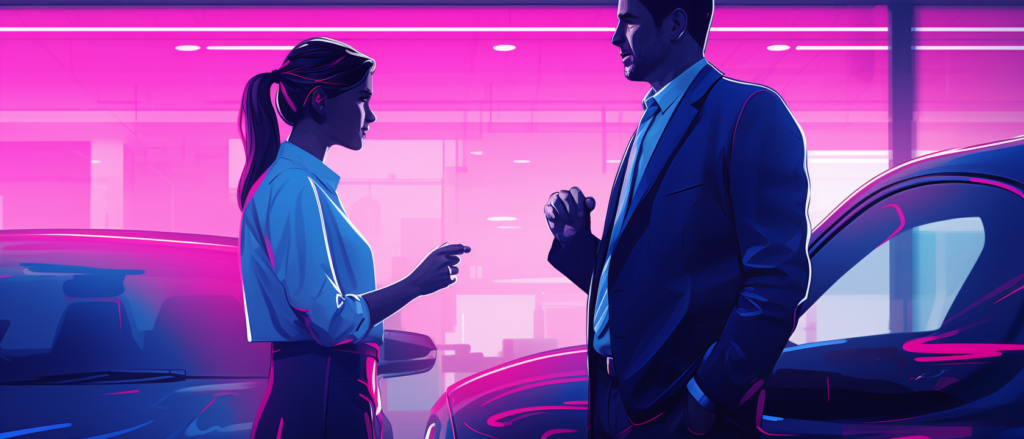When you stop and think about it, it is quite astonishing how far mankind has come – even just in my lifetime. Technology and transport in particular have moved very quickly.
While autonomous car experiments have been conducted since the 1920s, it wasn’t until this decade that we have begun to see the incredible advances in the automotive industry.
The concept of the autonomous car
For years autonomous cars sounded like a dream: get in and let the car itself worry about the road ahead, traffic lights and more, while you sit back, enjoy a coffee, and catch up on your emails on the way to work.
Early efforts on autonomous vehicles focussed almost exclusively on the vehicle, and the innovation needed in terms of sensors and other technology to make the car aware of its surroundings.
After all, if the car could drive itself, who needed to worry about the humans inside?

Eventually the auto industry realised the person in the car still needs to remain alert and be ready to take control. Somewhat surprisingly, this fact caught some manufacturers off guard, and is one of the reasons why there is so much activity at the moment on driver monitoring as it catches up to the automation of the vehicle itself.
5 levels of autonomous vehicles
Originally defined by the US department of transportation, there are now 5 accepted levels of vehicle automation. We summarise the five levels:
Level 0
The driver is in complete control of the vehicle.
Level 1
The car controls one or more function of a vehicle, such as assisted braking to help halt movement faster than a driver acting alone.
Level 2
The vehicle controls two primary functions. The NHTSA lists cruise control and lane centring as two complementary examples.
Level 3
Vehicles at level three control all safety-critical functions. At this level, however, drivers still need to be prepared for “occasional control”.
Level 4
Level 4 vehicles are fully automated. Response from a human driver is not required.
Tesla’s Model S
Tesla’s Model S with autopilot is an example of level 2.
I have driven a Tesla and was blown away by the experience. It takes a lot to impress me with technology these days, yet I stepped out of the car thinking this is the future.
Too anxious?
There are a lot of unknowns on the human side that are now starting to be explored in great detail.
For some people, being a passenger along for the ride in a fully autonomous car would cause them to be nervous and react possibly too quickly.
Maybe they would jump the gun and hit the brakes before even realising the car was about to react accordingly, and the car, themselves or others were in fact not in danger.
Is this pre-emptive reaction just another possible cause for an accident? With the problems faced by driverless cars, it will take a while for all people to actually trust them.
Tesla is under investigation
Tesla, one of the two pioneers of the driverless car (the other being Google; more below) is under investigation after a driver travelling in Tesla’s Model S vehicle was involved in a fatal accident just a few months ago.
When you read the details of the accident it is truly frightening; a truck was travelling perpendicular to the car and, due to the white colour of the truck against a bright white sky, neither the Tesla vehicle nor the Tesla driver noticed the truck. Therefore, the brakes were not applied and the vehicles collided.
What is not known is if a ‘regular’ vehicle was in the same situation, would the driver have been more alert, and been able to notice and avoid the situation? I suspect not.
Hands on the wheel – even when you’re not ‘driving’
It is important to acknowledge that when this accident occurred, the vehicle was in Autopilot mode, that is, Tesla’s advanced software and hardware systems were in action.
Tesla, and other manufacturers like Mercedes, who also have a version of autopilot mode on some of their models, make it clear a driver still needs to travel with his or her hands on the steering wheel in order to be able to respond if required.
For now, a driver needs to be just as alert as if they were in a regular vehicle.
Google’s driverless car
In the past six years, Google has reported 11 minor crashes in its self-driving vehicles. The crashes were, as stated in Google’s report, due to human driver error.
Google’s driverless cars, according to information cited have a backup driver, and an additional person as a monitor, should software or vehicle systems fail.
So right now, in their driverless car, there are still two people who have to remain vigilant and alert should the car’s systems malfunction.
The future of driverless cars
At this point – and depending on the level of automation of a vehicle – it seems that some autonomous cars cannot be trusted 100% to transport a person from one destination to the other, without the need for human interaction.
That, as stated in the same article, is still “many decades away”.
However, with examples like Tesla and Google, we can understand that technology is being further developed and tested across all five levels of autonomy.
Legislation vs innovation
There are a number of videos on YouTube showing drivers asleep while their car does the auto driving, and while legislators will see an accident waiting to happen, technologists will see signs of the future.
In an age when much legislation is used as a blunt instrument (such as professional fleet driver shift lengths) my hope is a balance can be found, and the tremendous progress that a company like Telsa has brought will not be halted.
Pushing the limit in driverless cars
As mentioned earlier, Tesla makes it clear that the technology in their Model S vehicle isn’t intended to fully take over a vehicle.
This raises some important questions…
Is this just another way for drivers to push themselves beyond their limits?
Will we change our behaviour and think less of the danger associated with losing focus, taking our eyes off the road, or moving around in the car?
Amongst all this technology that is being developed to monitor and automate a vehicle, will something be monitoring the driver, too?
Now, we need to focus on the driver
As mentioned above, the technology that has thus far been developed and tested focuses on creating an autonomous vehicle. Cameras, sensors, and other technology constantly monitoring a car, improving its reactions and general safety.
Video technology moves from car monitoring to human monitoring with Optalert’s fatigue detection technology.
When installed in in-vehicle video cameras, our patented technology keeps an eye on drivers and delivers early-warning drowsiness alerts.
And that’s incredibly important because it’s too late after a person has fallen asleep.
Cameras begin to replace mirrors in cars
Last month, Japan became one of the first countries in the world to allow vehicles to use cameras (and associated technology) in lieu of mirrors.
Benefits include a wider view (potentially eliminating blind spots) and digital compensation for harsh elements like glare, rain, or darkness.
Cameras are designed to not only improve the aesthetics of a car but also, of course, safety.
If it’s been deemed acceptable, and affordable enough, to replace car mirrors with cameras, it is also foreseeable to see widespread use of cameras focussed on a driver too, and not just to be used to review footage after an accident has occurred. After all, until cars are completely autonomous, they are, to varying degrees, still reliant on the alertness and ability of the driver.
Fatigue detection technology: licensing opportunities
Built on its reputation of the world’s only provider of early-warning drowsiness detection technology, Optalert offers licensing opportunities for consumer vehicles.
In-car vehicle cameras that have applied Optalert’s patented technology will save lives. Read more important information in this post.


